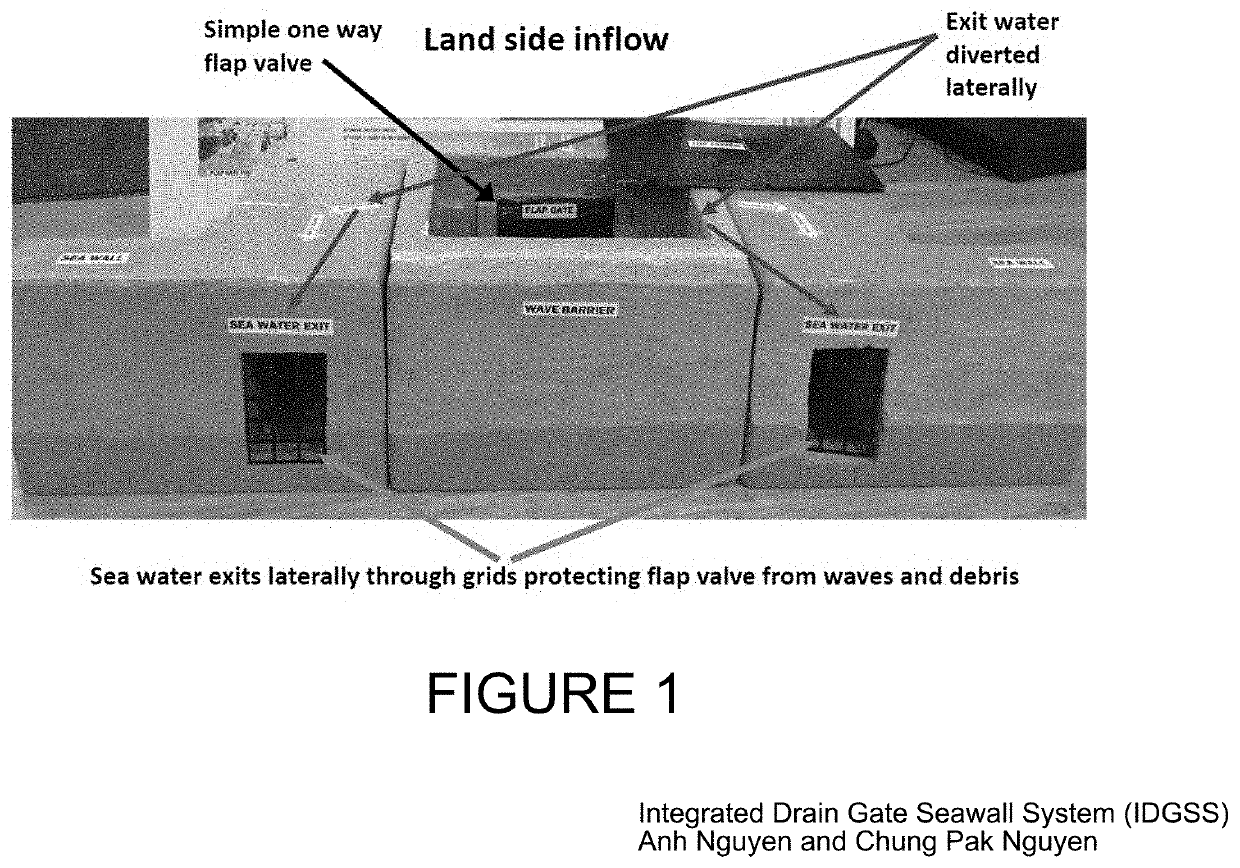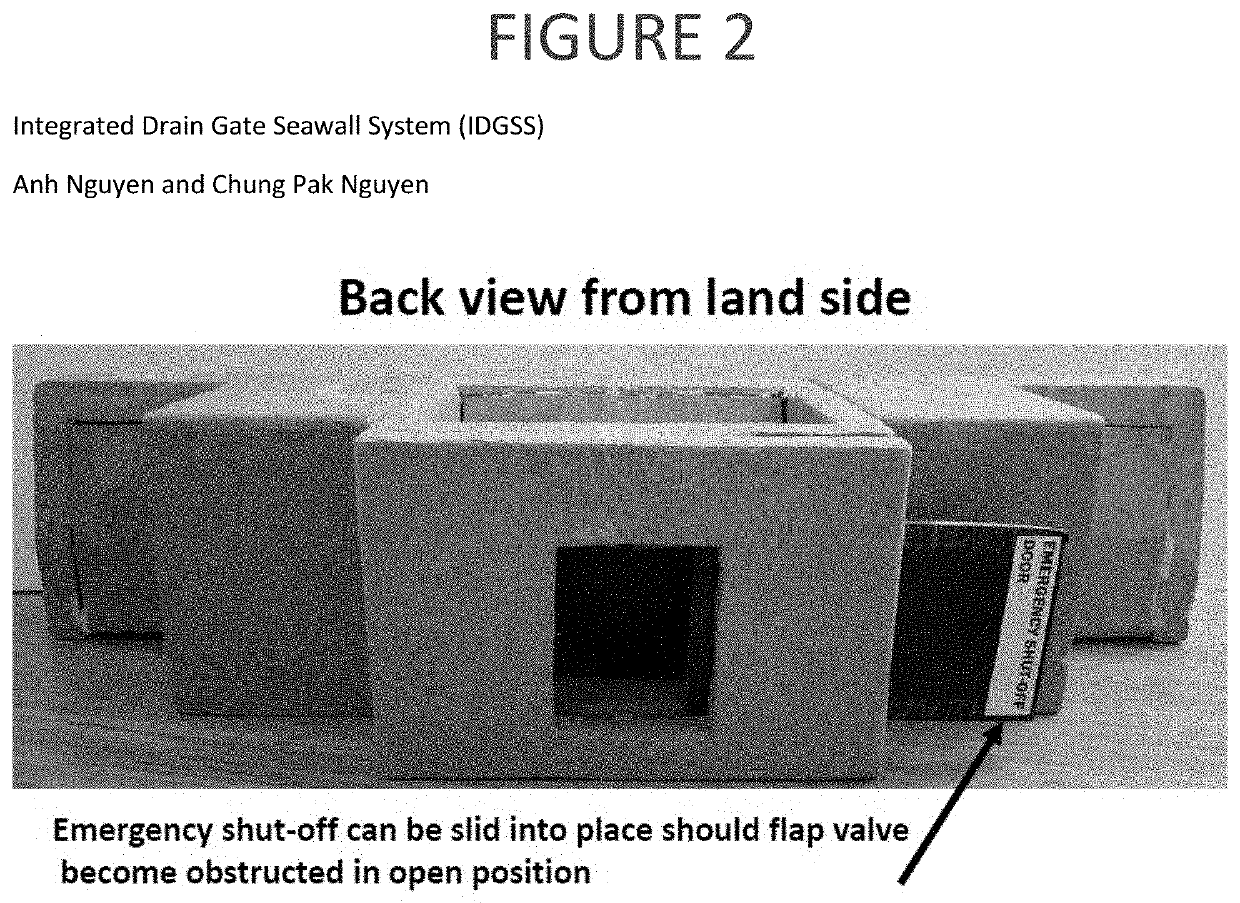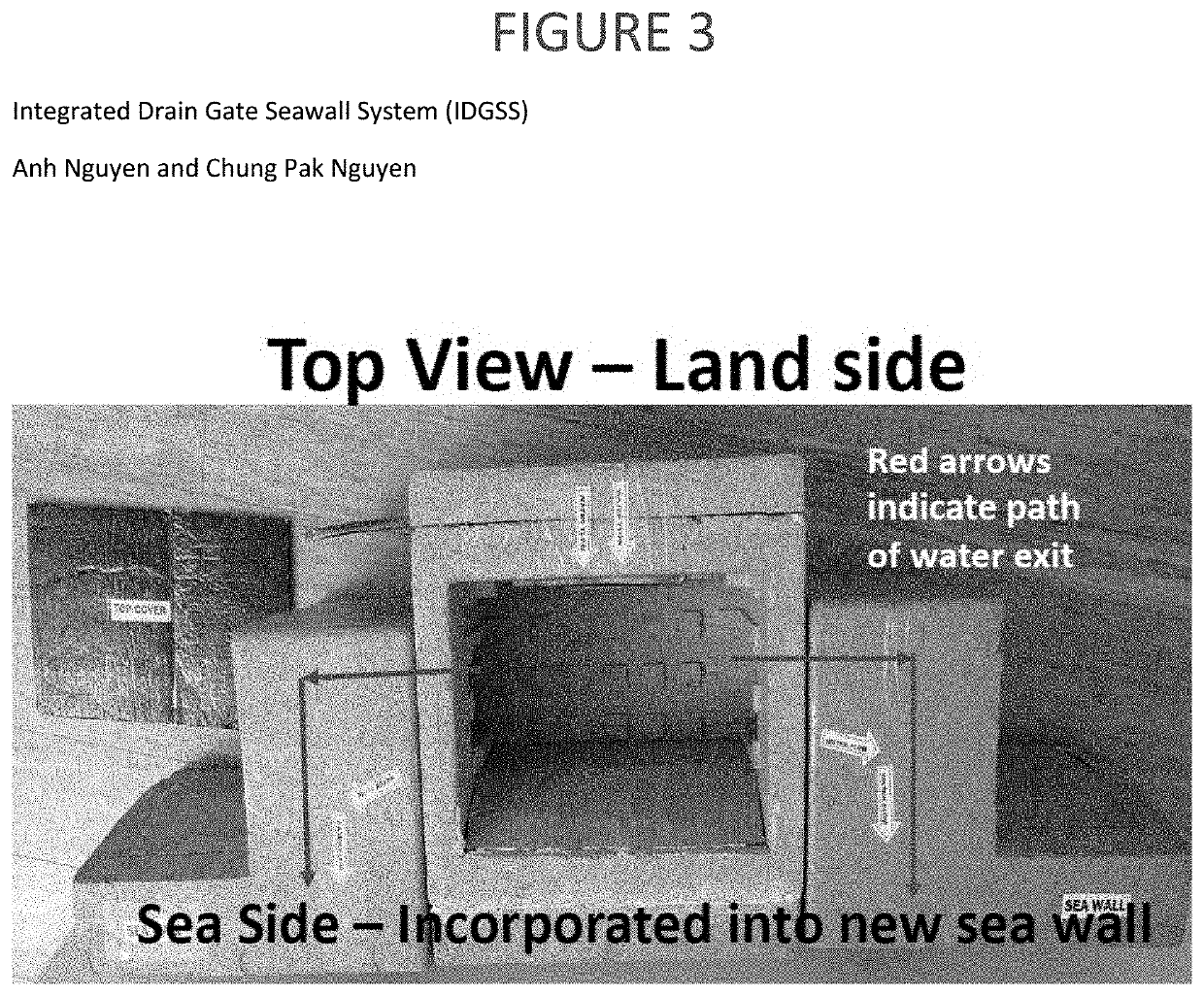Even at low tide, there was no proper drainage, and the splashed
seawater was unable to return to sea.
The normal conventional street drainage infrastructures were completely clogged with debris like shells, seaweeds, mud, rocks and sand.
(Photo A, B, C and D) No sooner, the second-
high tide came and continued to trap even more water inside the seawalls, and causing erosions below the seawalls, and then the walls began to crack due to the
bathtub pressure.
To make the matter worse, the tide gates broke during the storm at the
marsh, and the power outage made them completely useless.
The marshes cannot
handle such quantity of water and water from the
marsh too began to spill over into the home and into the streets.
Moreover, the storm came with a severe rain, it too trapped additional water inside the marsh's bathtub, and in the land, street areas.
Then, due to the ground saturation from the trapped water inside these seawalls and marshes, the trapped water began to enter into the basements from the floors of the basements, and the massive flooding ensued.
Finally, during these super storms, when we are in desperate need of fast drainage the most, we had absolutely no drainage system at all.
The conventional drainage /
outfall systems were no match for these severe super storms with splashed water over the seawalls during the high tides, and were inundated with rain from above, and too overwhelmed by
ton of wind,
backup pressure force.
In addition, since they are located at or buried below the street level, they are unable to adapt to such powerful storms.
Thus, when we really needed the drainage the most, the current drainage systems were not working or functioning at below capacity as it was originally designed.
Furthermore, it became a liability as a source a way for the storm water to
backup into the homes via plumbing and / or
sewage systems, into the streets via outfalls / drainage pipes, and exacerbate the flooding further.
The problem was very clear: current fixed wall barriers, and like
seawall designs are unable to drain water.
As a result, additional flooding is created by the trapped water; this is the byproduct of the manmade wall barrier designs.
Unfortunately, as we make these walls taller, it will only create deeper bathtubs, and the severity of manmade flooding will increase even more.
Unfortunately, these fixed barriers like concrete walls were designed to minimize flooding and storm damages at coastal area or other various waterfront properties like riverbanks, bay, beach, ocean and low
lying areas.
However, due to increasingly unpredictable
weather patterns of super storms, powerful rain,
snow and early Spring thaw has created trapped water to fill inside these fixed walls near the land, streets and marshes, like a bathtub.
Therefore, even as the storm recedes, the trapped water inside these fixed wall barriers continued to flood the properties far longer and increase the flood risk.
This is because these walls were never designed for drainage, only to keep the water out.
Now, the walls are no longer able to keep us safe, rather it has become hazardous, especially with all the
impervious surface areas created by man, like
parking lot,
asphalt street, concrete pavements,
downspout drainage systems and more buildings near the water.
Thus, the troubles of man's affinity water.
Therefore, this traditional concept of building walls without incorporating drainage systems has become a severe drainage problem all over the world.
2) In addition, other systems like tide gates, when the
Float switch cannot operate due to the electrical power outage, it further exacerbated the bathtub
scenario.
Instead of letting the water out during the low tide, the tide gates only increase the amount of the water trapped even further.
3) Moreover, the normal street drainage systems are not functional during such storms, due to severe wind pressure from the sea.
It was causing additional flooding into the street.
4) Finally, during these super storms, when we are in desperate need of fast drainage system, we had absolutely no drainage at all.
These drainage systems were not made for the severe storms since they are buried below the street level.
This type of conventional drainage system was not made to adapt to such powerful storms.
The cost of storm damage are in millions and cities are vulnerable ever more.
Eventually something will happen and will flood
Slow the energy of the storm, but when storm recedes, it can drain quickly
However, this barrier designs were missing an important point.
Once the water enters inside the barrier, there was no efficient methods to drain the water again.
Thus, causing negative consequences of creating a bathtub inside the barrier and causing further flooding.
Currently, we are building walls without them, and once the splashed water enters inside the walls, the waters are trapped and it is now causing additional flooding.
However, unless we build a 20 feet tall walls or higher, it is not possible to prevent splashing over the concrete walls.
Matter fact, the higher the walls become, the bathtub gets even bigger and the severity of flooding is even higher.
Since the water also enters from the current drainage systems, due to backpressure.
Unfortunately, because walls are only designed to keep the water out, even as the water recedes, like at low tide, the sea water is unable to return to drain.
T Thus, causing unintended consequences of creating a bathtub with the barriers like seawalls and causing further flooding.
PROBLEM: current
seawall designs are unable to drain water.
Unfortunately, because seawalls are only designed to keep the water out, even at low tide, the sea water is unable to return back to the sea.
The water inside the
seawall is higher and unable to escape, even trying to escape below the seawall.
 Login to View More
Login to View More  Login to View More
Login to View More 


